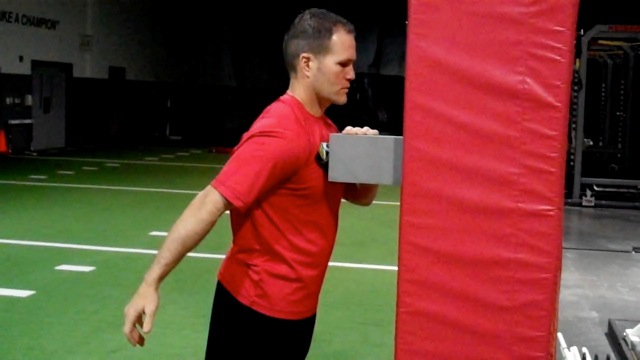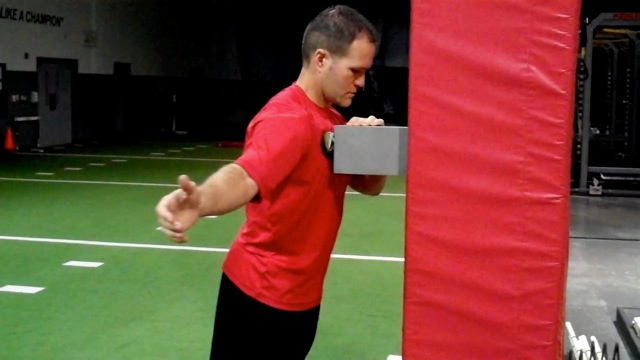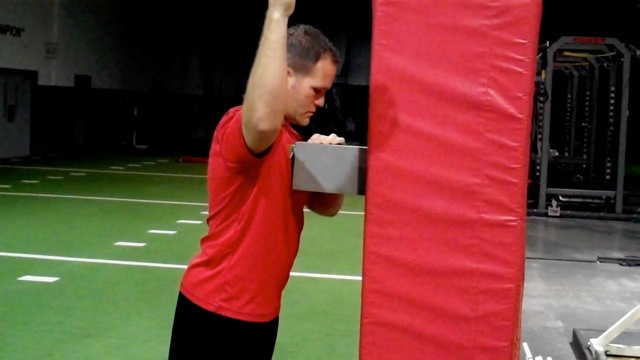
Tightness in the chest is a common issue that negatively impacts posture and may contribute to shoulder impingement and dysfunction. In this column, I will reveal how using a compression technique in combination with active movement can effectively mobilize the pectoralis major/minor and improve soft tissue extensibility.
Execution:
Execution:
For this technique, I prefer to utilize a baller block and trigger point ball. Position the block on a wall or near a doorway so that the ball is between the block and the chest allowing free movement of the arm on the side you are mobilizing. The pressure should be consistent (moderate) throughout the exercise, and the ball should be positioned below and medial to the coracoid process.
 | A) Begin with the arm at the side (palm forward) and perform an active "I" movement moving into shoulder extension maintaining consistent pressure with the ball. Perform 3-5 repetitions. |
 | B) Begin with the arm at 90 degrees of forward flexion and perform an active "T" movement moving into horizontal abduction maintaining consistent pressure with the ball. Perform 3-5 repetitions. |
 | C) Begin with the arm at the side and perform an active "Y" movement elevating the arm in the scapular plane maintaining consistent pressure with the ball. Perform 3-5 repetitions. |
Alternative method:
Simply hold a lacrosse or trigger point ball against the chest with the uninvolved hand to apply consistent pressure while moving the involved arm in the three planes of motion described above.
Application:
This exercise is effective for movement preparation and releasing tightness in the pectoralis major/minor that negatively impacts posture, movement mechanics and shoulder function. Keep in mind that pec minor tightness will cause the scapula to tip forward.
Often, overhead athletes are prone to rotator cuff injury and maximizing mobility will reduce undesirable internal rotation and kyphotic posture, while facilitating optimal scapular position. Additionally, those performing overhead squats and snatches will have better movement capacity in the shoulder thereby reducing compensatory movements often seen in the body (e.g. lumbar spine rotation and extension).
Including routine soft tissue mobilization work is recommended for clients and athletes involved in routine overhead activity, as well as anyone with postural dysfunction and muscle imbalance. Static stretching can also be done afterward to enhance flexibility.
Brian Schiff, PT, OCS, CSCS, is a licensed physical therapist, respected author and fitness professional. Currently, he serves as the supervisor at the Athletic Performance Center in Raleigh, NC. Brian presents nationally at several professional conferences and seminars on injury prevention, rehab and sport-specific training. For more cutting edge training information, subscribe to his monthly Training & Sports Medicine Update at www.BrianSchiff.com.
















